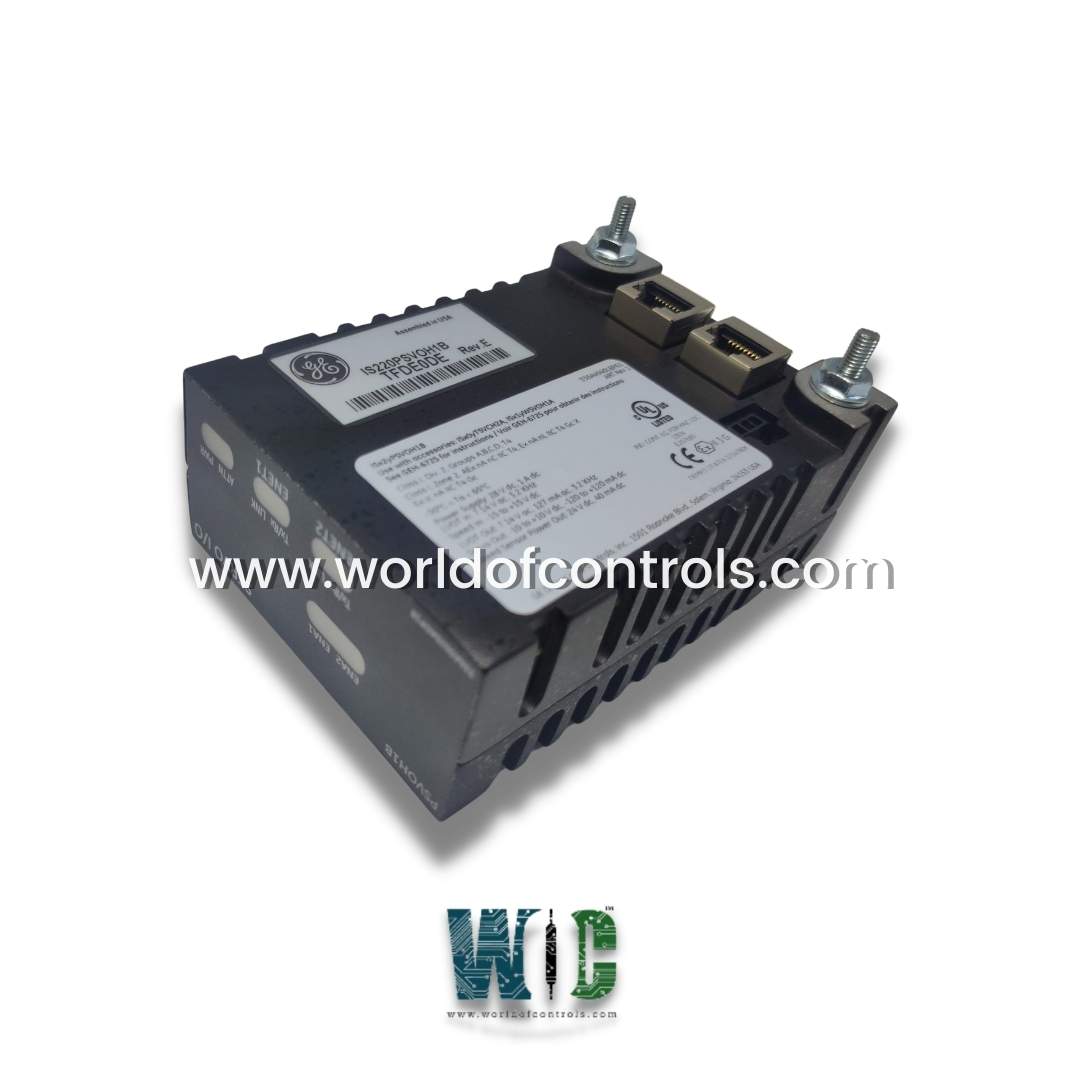
World Of Controls understands the criticality of your requirement and works towards reducing the lead time as much as possible.
IS220PSVPH1B - Steam Servo Control I/O Module is available in stock which ships the same day.
IS220PSVPH1B - Steam Servo Control I/O Module comes in UNUSED as well as REBUILT condition.
To avail our best deals for IS220PSVPH1B - Steam Servo Control I/O Module, contact us and we will get back to you within 24 hours.
SPECIFICATIONS:
Part Number: IS220PSVPH1B
Manufacturer: General Electric
Series: Mark VIe
Product Type: Servo Control I/O Module
Control Signal Input: 4–20 mA, ±10 VDC
Feedback Signal: LVDT
Technology: Surface Mount
SIL Compliance: SIL 2/SIL 3
Common Mode Voltage Range: ±5 V
Dimensions: 11.00 x 9.00 x 3.00
Operating temperature: 0 to 60 °C
No.of Analog Voltage Inputs: 6
Repair: 3-7 days
Availability: In Stock
Country of Origin: United States
FUNCTIONAL DESCRIPTION:
IS220PSVPH1B is a Steam Servo Control I/O Module manufactured and designed by General Electric as part of the VIe Series used in GE Distributed Control Systems. The Steam Servo Control I/O Module is a dedicated interface module used in steam turbine control systems to manage position feedback and command signals for electrohydraulic servo valves. It functions as the signal processing unit between the turbine control system (e.g., DCS or PLC) and the hydraulic actuator systems that modulate steam valve positions. The module handles both analog and digital signals, typically receiving position command signals from the control logic and transmitting them as current or voltage outputs (e.g., 4–20 mA or ±10 VDC) to servo amplifiers or directly to servo valves.
In addition to output functions, the module receives position feedback from LVDTs (Linear Variable Differential Transformers), typically in the form of differential voltage signals, which it conditions and transmits back to the control system for closed-loop regulation. Integrated filtering, signal isolation, and fault diagnostics ensure high-precision control and safety compliance. The module plays a vital role in ensuring turbine speed control, load sharing, and trip block actuation in steam turbine systems.
INSTALLATION:
The module is mounted on a DIN rail or directly into a backplane, depending on system architecture. All field connections—such as servo valve coil outputs and LVDT feedback inputs—must be wired using shielded twisted-pair cables to prevent EMI/RFI interference. Grounding practices must conform to IEEE-518 and ISA standards to ensure signal integrity.
Power supply connections (typically 24 VDC or as specified by the OEM) should be routed through fused terminals. It is essential to follow the OEM wiring diagram precisely to avoid miswiring, particularly in dual-redundant or fail-safe configurations. Cable separation should be maintained between high-voltage, analog, and digital signal paths. After installation, the system should undergo loop integrity checks and analog signal calibration using certified signal simulators.
OPERATION:
The Steam Servo Control I/O Module acts as a closed-loop control component within the turbine automation system. It receives a position command from the turbine governor or control logic, often based on load demand or speed setpoint, and outputs a proportional control signal to the servo actuator controlling the steam inlet valve. Concurrently, it receives real-time feedback from the LVDT mounted on the valve stem, processes the signal to remove noise and non-linearity, and feeds this data back to the control system.
The module supports real-time diagnostics, including signal loss detection, out-of-range feedback, and fail-safe positioning in the event of control signal failure. In redundant systems, cross-channel monitoring ensures that a single module failure does not compromise turbine control. The module operates with high-resolution DACs/ADCs to achieve precise valve positioning, which is critical for maintaining turbine efficiency, stability, and protection under varying load and process conditions.
COMPATIBILITY WITH SPECIFIC TURBINE CONTROL PLATFORMS:
The Steam Servo Control I/O Module is designed to integrate seamlessly with industry-standard turbine control systems, supporting both retrofit and greenfield applications across steam turbine fleets. It is compatible with a variety of OEM and third-party digital control platforms, offering reliable interface options for electrohydraulic servo operation, LVDT feedback processing, and high-speed valve actuation.
WOC has the largest stock of OEM Replacement Parts for GE Distributed Control Systems. We can also repair your faulty boards and supply unused and rebuilt boards backed up with a warranty. Our team of experts is available around the clock to support your OEM needs. Our team of experts at WOC is happy to assist you with any of your automation requirements. For pricing and availability on parts and repairs, kindly contact our team by phone or email.
What types of output signals does the module support for servo valve actuation?
The module typically supports ±10 VDC and 4–20 mA analog outputs, compatible with most industrial electrohydraulic servo valves used in steam turbine systems. Some versions may offer configurable output ranges via DIP switches or software parameters.
What types of feedback signals does the module accept?
It accepts LVDT feedback, commonly in the form of differential AC voltage (e.g., 3 Vrms at kHz), or optionally conditioned signals such as 4–20 mA or 1–5 VDC from external signal conditioners. It may support single or dual LVDT inputs for redundancy.
Is the module compatible with redundant turbine control architectures?
Yes. The module is suitable for use in 1oo2, 2oo2, or 2oo3 control architectures and can operate in TMR (Triple Modular Redundant) systems. It is often deployed in conjunction with redundant servo drive circuits for increased reliability.